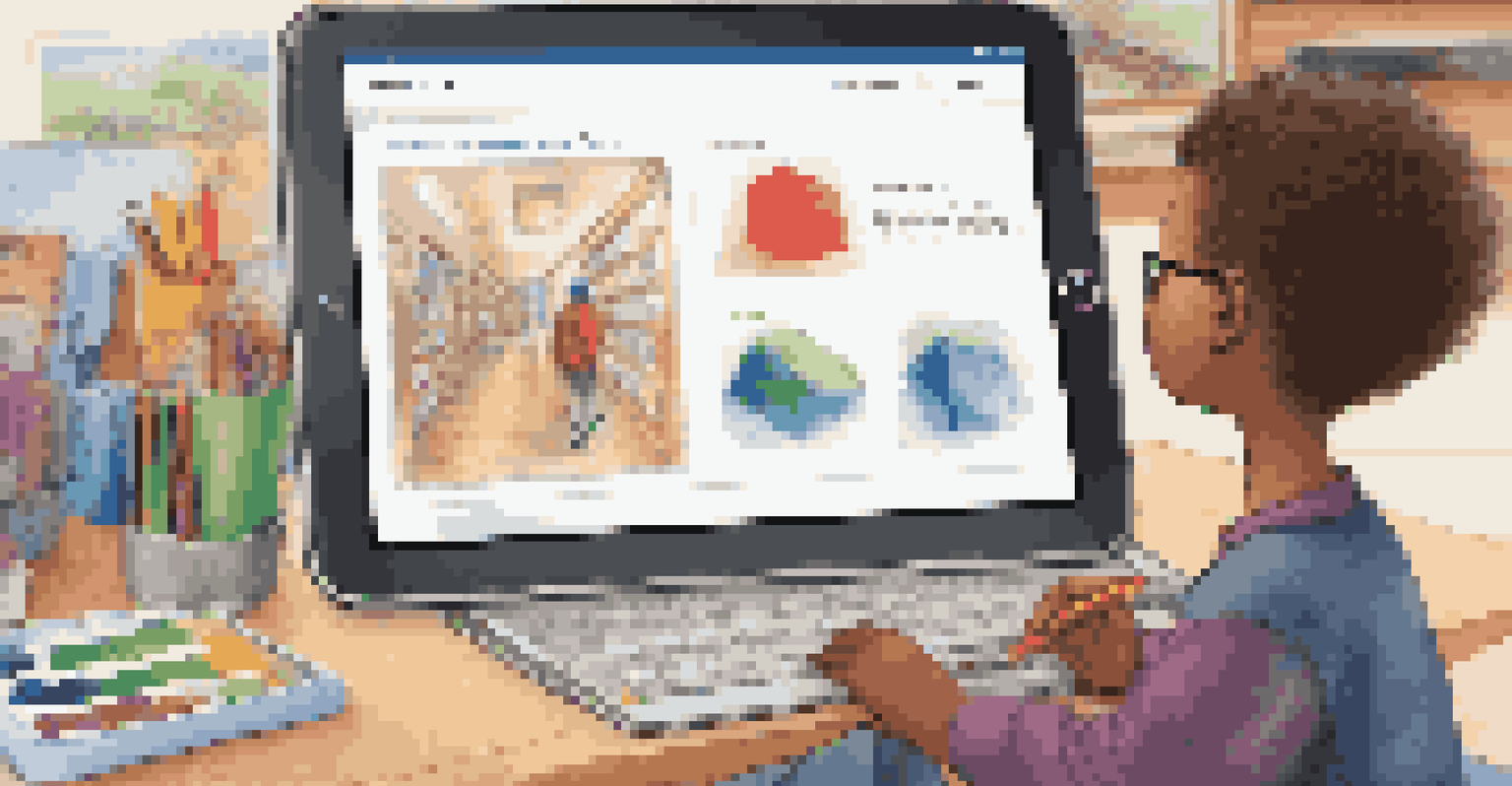Exploring Digital Tools for Future-Ready Educational Practices

Understanding the Importance of Digital Tools in Education
In today's rapidly changing world, digital tools have become essential in education. They not only enhance learning experiences but also prepare students for a tech-driven future. By integrating technology into classrooms, educators can foster creativity and critical thinking skills among students.
Technology is best when it brings people together.
These tools serve as bridges between traditional teaching methods and modern learning needs. For instance, virtual classrooms allow students to connect globally, gaining diverse perspectives that enrich their educational journey. Additionally, interactive learning platforms engage students in a way that textbooks often cannot.
Ultimately, adopting digital tools in education is about more than just keeping up with trends; it’s about equipping students with the skills they need to thrive. As technology continues to evolve, so must our approaches to teaching and learning.
Key Digital Tools Transforming Learning Environments
There’s a plethora of digital tools available that can significantly enhance educational practices. From Learning Management Systems (LMS) like Google Classroom to multimedia resources such as interactive videos, these tools cater to various learning styles. They make lessons more engaging and accessible for all students.

For example, platforms like Kahoot! turn quizzes into fun competitions, motivating students to participate actively. Meanwhile, software for collaborative work, like Microsoft Teams, helps students develop teamwork skills while learning remotely. These tools not only support learning but also help build essential life skills.
Digital Tools Enhance Learning
Integrating digital tools in education fosters creativity and critical thinking while preparing students for a tech-driven future.
Incorporating these digital tools is about creating a rich learning environment that encourages exploration and discovery. By leveraging technology effectively, educators can transform the traditional classroom into an interactive hub of knowledge.
Personalized Learning Through Digital Solutions
One of the most exciting benefits of digital tools is their ability to personalize learning experiences. Adaptive learning technologies assess individual student needs and tailor content accordingly, ensuring that everyone progresses at their own pace. This personalized approach can lead to improved comprehension and retention of information.
The great aim of education is not knowledge but action.
Imagine a classroom where each student has access to a customized learning path that matches their strengths and weaknesses. Platforms like DreamBox Learning and iXL Learning provide such experiences, allowing students to work through math problems that are suited to their skill level. This kind of differentiation can significantly enhance student engagement.
Personalized learning not only fosters academic growth but also builds confidence in students. When learners feel challenged yet supported, they are more likely to take ownership of their education and thrive.
Fostering Collaboration with Digital Tools
Collaboration is a cornerstone of effective learning, and digital tools make it easier than ever. Tools like Padlet and Google Docs enable students to work together on projects in real-time, regardless of their physical location. This collaborative spirit encourages idea sharing and helps students develop crucial communication skills.
Moreover, digital platforms allow for a blend of synchronous and asynchronous collaboration. Students can participate in discussions or group projects at their own convenience while still being part of a larger team effort. This flexibility is particularly valuable in today’s diverse learning environments.
Personalized Learning Experiences
Adaptive technologies allow for tailored learning paths, helping students progress at their own pace and boosting engagement.
By fostering collaboration through digital tools, educators help students build relationships and learn from one another. These interactions not only enrich the educational experience but also prepare students for the collaborative nature of the modern workplace.
Enhancing Engagement with Gamification
Gamification is an innovative approach that uses game-design elements in non-game contexts to boost engagement. In education, this can mean turning lessons into challenges and incorporating rewards for completed tasks. This method taps into students' natural desire for competition and achievement, making learning more appealing.
Tools like Classcraft and Quizizz are fantastic examples of gamification in action. They transform mundane assignments into exciting quests, motivating students to participate actively. By adding an element of fun, students are more likely to engage with the material and retain information.
As we strive to make learning enjoyable, gamification stands out as an effective strategy. It encourages students to take risks, explore new concepts, and ultimately develop a love for learning.
Assessing Progress with Digital Tools
Assessment is a critical component of education, and digital tools offer innovative ways to evaluate student progress. Traditional testing methods can be limiting, but platforms like Edmodo and Socrative provide real-time feedback and analytics. This immediate insight helps educators adjust their teaching strategies as needed.
For instance, educators can use formative assessments through quizzes and surveys to gauge understanding during lessons. These quick check-ins allow for timely interventions, ensuring that no student falls behind. The data collected can also inform future lesson planning, creating a cycle of continuous improvement.
Collaboration and Engagement Boost
Digital platforms enable real-time collaboration and gamification, making learning more interactive and enjoyable for students.
By embracing digital assessment tools, educators can create a more dynamic and responsive learning environment. This approach not only supports student growth but also enhances teaching effectiveness.
Preparing Educators for Digital Integration
As digital tools become more prevalent in education, it’s essential to prepare educators for this transition. Professional development programs focused on technology integration can empower teachers to use these tools effectively. Workshops, online courses, and peer collaboration can provide the necessary training and support.
Moreover, fostering a culture of innovation within schools encourages educators to experiment with new tools. When teachers feel supported and confident in using technology, they are more likely to embrace it in their classrooms. This can lead to a ripple effect, positively impacting students’ learning experiences.

Ultimately, investing in teacher training is crucial for the successful integration of digital tools in education. By preparing educators for this shift, schools can create a future-ready learning environment that benefits everyone.
The Future of Education: Embracing Digital Transformation
As we look to the future, the role of digital tools in education will only continue to grow. The pandemic has accelerated this transformation, highlighting the importance of flexibility and adaptability in teaching. Moving forward, it’s vital for educators and institutions to embrace these changes and leverage technology to enhance learning.
This digital transformation isn’t just about implementing new tools; it’s about rethinking our educational practices. By embracing innovative methods, we can create a more inclusive and engaging educational landscape. Students will benefit from varied learning experiences that cater to their needs and preferences.
In conclusion, the future of education lies in our ability to adapt and integrate digital tools. By prioritizing this transformation, we can ensure that our students are not only prepared for the challenges ahead but are excited about the learning journey.